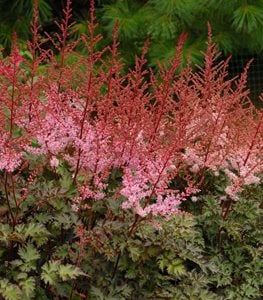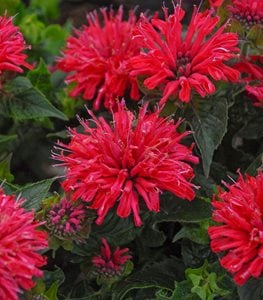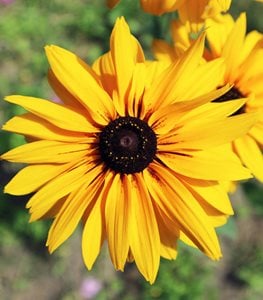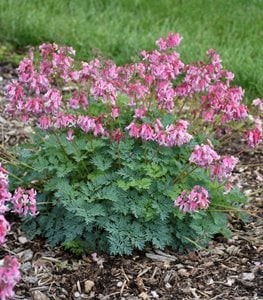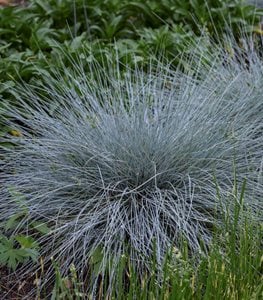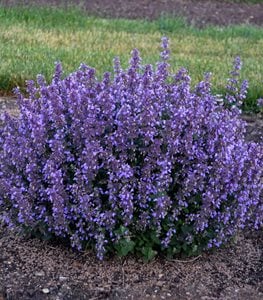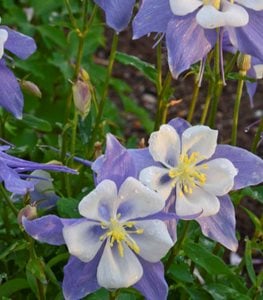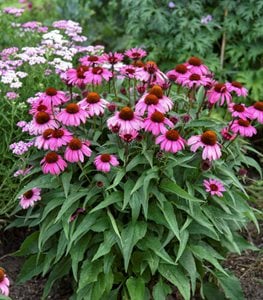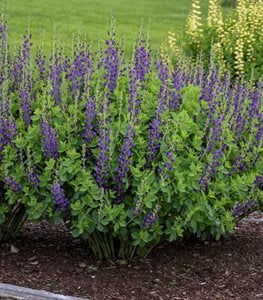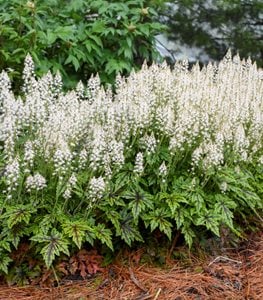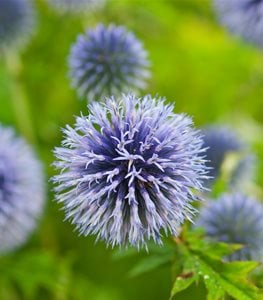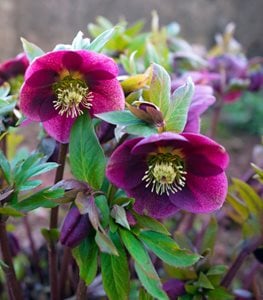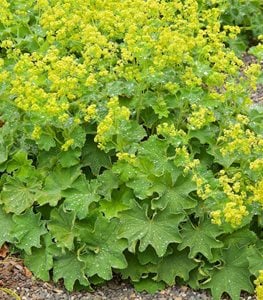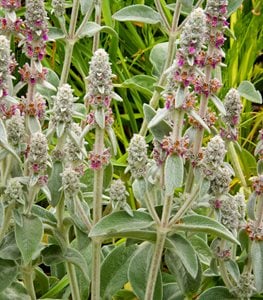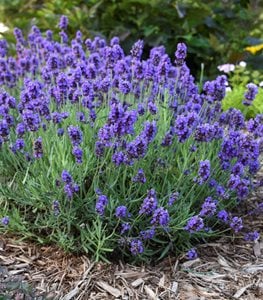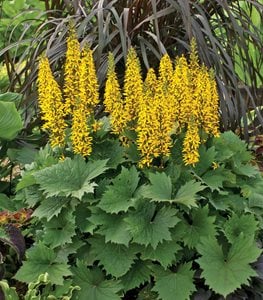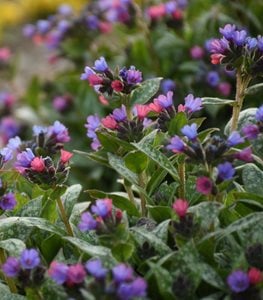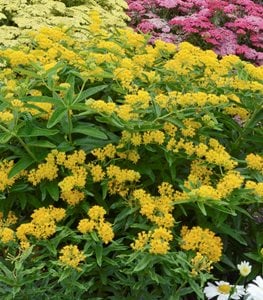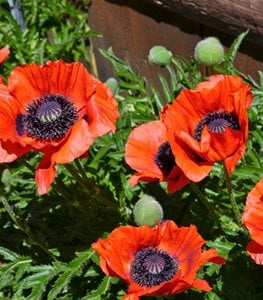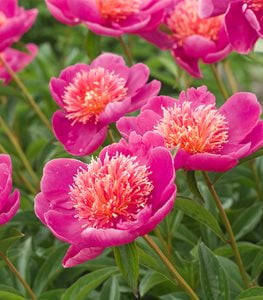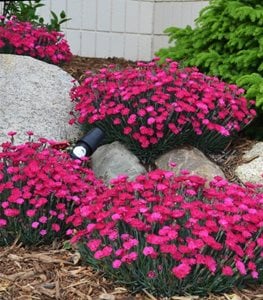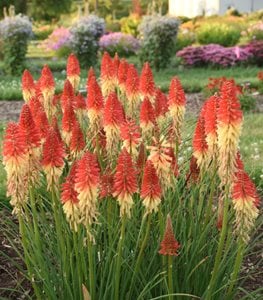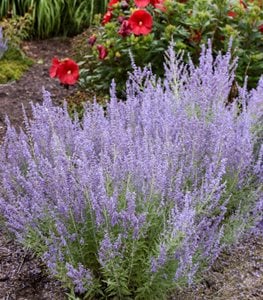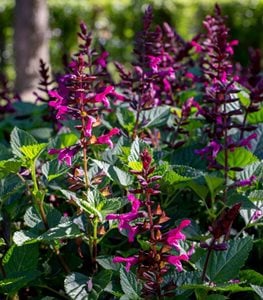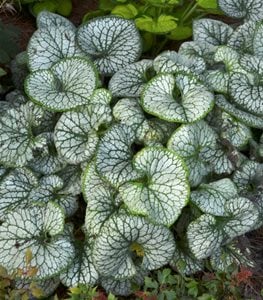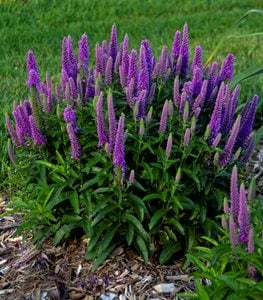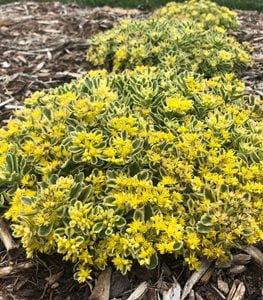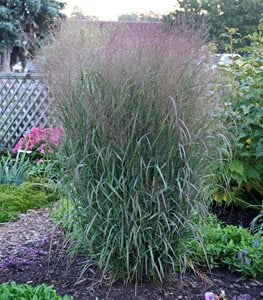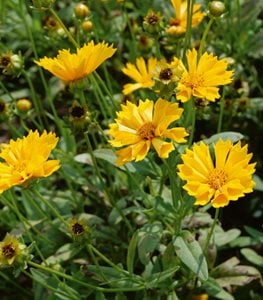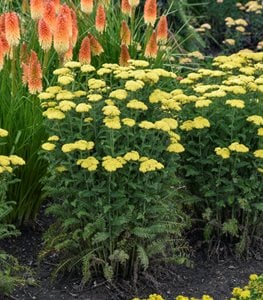30 DEER RESISTANT PERENNIALS TO GROW
Include these perennial plants in your landscape to minimize damage from deer.If you live in a suburban or rural area, you’ve likely experienced the damage that deer can cause to your garden. Treasured plants can be completely decimated overnight due to deer grazing. Though you can’t completely eliminate the problem without erecting a deer fence—which can be expensive—you can deter deer by including perennials and other plants they dislike.
Deer will eat almost anything if they are hungry enough, preferring tender new plant growth that’s easier to chew. Late winter and early spring when food sources are scarce is when garden plants are most vulnerable to grazing. Deer are less likely to bother plants that have:
- strong fragrance
- bitter taste
- thorny stems
- unappealing texture
- toxic compounds
Here are some of the best deer-resistant perennials to include in your garden:
ASTILBE (Astilbe spp.)
Zones: 3-9
Exposure: Full sun to shade; flowers best with partial sun
Habit: Upright spreading habit
Height/Spread: 1 to 4 feet tall and wide
Bloom time: Summer
Known as false spirea, the showy flower plumes appear in summer, brightening up moist woodlands and shady borders. The smell, texture, and bitter taste of astilbe flowers are distasteful to deer. Read more about growing astilbe.
‘Delft Lace’ astilbe from Proven Winners, pictured.
BEE BALM (Monarda spp.)
Zones: 3-9
Exposure: Full sun to part shade
Habit: Upright habit
Height/Spread: 1 to 4 feet tall, 1 to 3 feet wide
Bloom time: Late spring to fall
Bee balm produces whorls of tubular flowers that are highly attractive to bees, butterflies, and other pollinators. Related to mint, this resilient herbaceous perennial has a pungent smell and taste that deer dislike. Read more about growing bee balm.
‘Pardon My Cerise’ bee balm from Proven Winners, pictured.
BLACK-EYED SUSAN (Rudbeckia spp.)
Zones: 3-10
Exposure: Full sun
Habit: Upright spreading habit
Height/Spread: 1 to 5 feet tall, 1 to 3 feet wide
Bloom time: Summer to fall
This prairie native is a short-lived perennial, biennial, or annual with cheerful daisy-like flowers in warm tones of orange, yellow, gold, and red. Deer find the rough texture of the fuzzy stems and leaves to be unappealing. Read more about growing black-eyed Susan.
BLEEDING HEART (Lamrocapnos spectabilis syn. Dicentra spectabilis)
Zones: 3-9
Exposure: Partial shade
Habit: Upright spreading habit
Height/Spread: 2 to 3 feet tall, 1 to 3 feet wide
Bloom time: Late spring to early summer
This beloved springtime ephemeral is characterized by charming heart-shaped blooms that occur above the delicate ferny foliage. Though bleeding heart is considered deer-resistant, this can vary depending on whether more preferable food sources are available. Read more about growing bleeding heart.
‘Pink Diamonds’ fern-leaved bleeding heart from Proven Winners, pictured.
BLUE FESCUE (Festuca glauca)
Zones: 4-8
Exposure: Full sun
Habit: Mounding clumping habit
Height/Spread: 6 to 12 inches tall, 16 to 18 inches wide
Bloom time: Summer
This compact ornamental grass is grown for the wispy silvery-blue foliage that adds texture and color to beds, borders, and mass plantings. Fescue is not a preferred plant of deer, possibly due to its low nutritional value, though plants may be more susceptible to deer browse if other food is scarce.
CATMINT (Nepeta spp.)
Zones: 3-9
Exposure: Full sun to part shade
Habit: Mounding spreading habit
Height/Spread: 1 to 3 feet tall and wide
Bloom time: Late spring to fall
An easy-care perennial, catmint blooms for months with clusters of vivid blue flowers, though some varieties produce pink or white flowers. This mint relative is shunned by deer for its pungent scent and taste. Read more about growing catmint.
‘Cat’s Pajamas’ catmint from Proven Winners, pictured.
COLUMBINE (Aquilegia spp.)
Zones: 3-9
Exposure: Full sun to part shade
Habit: Upright habit
Height/Spread: 8 to 36 inches tall, 8 to 24 inches wide
Bloom time: Mid-spring to early summer
A favorite springtime woodland perennial, columbine is characterized by open-faced flowers with long upwards or back-facing spurs. Deer will avoid eating columbine plants due to their toxic compounds. Read more about growing columbine.
CONEFLOWER (Echinacea spp.)
Zones: 3-9
Exposure: Full sun
Habit: Upright spreading habit
Height/Spread: 1 to 5 feet tall, 1 to 2 feet wide
Bloom time: Summer
Native to North American prairies, Echinacea is known for its attractive flowers with cone-shaped centers. Deer will seldom bother this medicinal pollinator plant due to its aroma and spiny cone. Read more about growing coneflower.
Color Coded ‘The Fuchsia is Bright’ coneflower from Proven Winners, pictured.
FALSE INDIGO (Baptisia spp.)
Zones: 3-9
Exposure: Full sun to part shade
Habit: Upright spreading habit
Height/Spread: 3 to 4 feet tall and wide
Bloom time: Late spring to early summer
False indigo produces towering spires of pea-like flowers in spring, with a shrubby habit and lobed foliage that remains attractive through fall. Deer avoid false indigo due to its strong scent and bitter taste. Read more about growing false indigo.
Decadence ‘Sparkling Sapphires’ baptisia from Proven Winners, pictured.
FOAMFLOWER (Tiarella spp.)
Zones: 3-9
Exposure: Partial sun to shade
Habit: Compact mounding habit
Height/Spread: 6 to 12 inches tall, 12 to 24 inches wide
Bloom time: Spring
This woodland perennial produces frothy white or pink flowers for in spring with attractive patterned foliage that stays evergreen in milder climates. Deer will leave foamflower alone due to the astringent properties of the foliage. Learn more about growing foamflower.
‘Cutting Edge’ foamflower from Proven Winners, pictured.
GLOBE THISTLE (Echinops spp.)
Zones: 3-9
Exposure: Full sun
Habit: Upright branching habit
Height/Spread: 2 to 5 feet tall, 1 to 3 feet wide
Bloom time: Summer
Spiky globe-shaped blue or silver flowers and thistle-like foliage add structure and height to the summer border. This tough easy-care perennial is avoided by deer due to the prickly texture of the flowers and leaves.
HELLEBORE (Helleborus spp.)
Zones: 4-9
Exposure: Sun to part shade, depending on species
Habit: Compact, upright, or spreading habit
Height/Spread: 1 to 4 feet tall, 1 to 3 feet wide
Bloom time: Winter to spring
Hellebore is one of the best deer-resistant perennial flowers for the winter garden, with cup-shaped flowers that occur in a wide range of coloring and patterns. The leathery toothed foliage is distasteful to deer. Read more about growing hellebores.
LADY'S MANTLE (Alchemilla mollis)
Zones: 3-9
Exposure: Full sun to part shade
Habit: Mounding spreading habit
Height/Spread: 1 to 2 feet tall and wide
Bloom time: Late spring to early fall
Tolerant of a wide range of growing conditions, lady’s mantle is a cottage garden favorite grown for the attractive scallop-edged leaves and foamy clusters of soft yellow flowers. Deer are likely deterred by the fuzzy texture of the foliage.
LAMB'S EAR (Stachys byzantina)
Zones: 4-9
Exposure: Full sun to part shade
Habit: Mounding spreading habit
Height/Spread: 6 to 18 inches tall, 12 to 36 inches wide
Bloom time: Late spring to early summer
Native to the Mediterranean region, this tough, drought-tolerant perennial has velvety silver leaves that resemble lamb’s ears. Deer find the soft, wooly texture of the foliage to be distasteful. Read more about growing lamb's ear plants.
LAVENDER (Lavandula spp.)
Zones: 5-9
Exposure: Full sun
Habit: Upright habit
Height/Spread: 1 to 4 feet tall, 1 to 5 feet wide
Bloom time: Late spring to early fall
This popular herb is grown for its attractive flower spikes, aromatic foliage, and wide range of culinary, medicinal and ornamental uses. Deer are deterred by lavender’s pungent scent and taste. Read more about growing lavender.
Sweet Romance lavender from Proven Winners, pictured.
LEOPARD PLANT (Ligularia spp.)
Zones: 3-9
Exposure: Full sun to shade; flowers best with some direct sun
Habit: Upright spreading habit
Height/Spread: 2 to 4 feet tall, 1 to 4 feet wide
Bloom time: Summer to early fall
Large rounded or palmate foliage is topped by tall yellow flower spikes in summer. This moisture lover can be grown in a shade garden or near a pond or stream. Leopard plant is generally deer resistant unless other food sources are scarce.
‘Bottle Rocket’ ligularia from Proven Winners, pictured.
LUNGWORT (Pulmonaria spp.)
Zones: 3-9
Exposure: Partial shade to shade
Habit: Mounding spreading habit
Height/Spread: 6 to 12 inches tall, 12 to 24 inches wide
Bloom time: Early to mid-spring
One of the earliest perennials to bloom, lungwort is a woodland perennial with colorful bell-shaped flowers that emerge along with the patterned or spotted green foliage. Deer are discouraged by the fine hairy texture of the leaves that can irritate their mouth and digestive tract. Read more about growing lungwort.
‘Spot On’ lungwort from Proven Winners, pictured.
MILKWEED (Asclepias spp.)
Zones: 3-9
Exposure: Full sun
Habit: Upright habit
Height/Spread: 1 to 6 feet tall, 1 to 3 feet wide
Bloom time: Summer
Milkweed is a prairie native that supports a wide range of pollinating insects. Clusters of tiny star-shaped flowers are followed by large showy seed pods. The sticky milky sap in the stems and leaves is distasteful and mildly toxic to deer. Read more about growing milkweed.
‘Hello Yellow’ milkweed from Proven Winners, pictured.
ORIENTAL POPPY (Papaver orientale)
Zones: 3-8
Exposure: Full sun
Habit: Upright spreading habit
Height/Spread: 1 to 3 feet tall, 1 to 2 feet wide
Bloom time: Late spring to early summer
Flamboyant papery blooms occur above spiky thistle-like foliage, with flower colors of orange, red, pink, apricot, white, and purple. Deer will shun oriental poppy due to its toxicity. Read more about growing Oriental poppies.
PEONY (Paeonia spp.)
Zones: 2-8
Exposure: Full sun to part shade
Habit: Upright habit
Height/Spread: 1 to 7 feet tall, 1 to 5 feet wide
Bloom time: Spring
A staple of spring borders, peony is a perennial flower revered for the showy blooms in a wide range of colors and forms. Deer dislike the strong fragrance of the blooms and the taste of the sap in the stems. Read more about growing peonies.
PINKS (Dianthus spp.)
Zones: 3-9
Exposure: Full sun to part shade
Habit: Upright mounding or ground cover habit
Height/Spread: 4 to 36 inches tall, 4 to 24 inches wide
Bloom time: Spring to fall, depending on the variety
This reliable long-blooming perennial is especially popular for cottage-style gardens. Frilly clove-scented flowers occur in almost every color, from white to nearly black. Pinks are seldom bothered by deer due to the fragrance, bitter taste, and toxicity, which can cause digestive issues. Read more about growing pinks.
‘Paint the Town Magenta’ dianthus from Proven Winners, pictured.
RED HOT POKER (Kniphofia spp.)
Zones: 5-9
Exposure: Full sun
Habit: Upright clumping habit
Height/Spread: 2 to 6 feet tall, 1 to 3 feet wide
Bloom time: Early summer to fall, depending on the variety
Vertical flower spikes in bright hues of red, orange, yellow, chartreuse, or cream add drama and tropical flair to the summer border. Deer will avoid red hot poker plant due to the sharp edges of the grass-like foliage. Read more about growing red hot poker plants.
Pyromania® 'Rocket's Red Glare' kniphofia from Proven Winners, pictured.
RUSSIAN SAGE (Perovskia atriplicifolia)
Zones: 4-9
Exposure: Full sun
Habit: Upright spreading habit
Height/Spread: 2 to 4 feet tall and wide
Bloom time: Early summer to fall
Russian sage is an undemanding herbaceous perennial with silvery foliage and prolific spikes of dreamy lavender-blue flowers. Deer dislike the pungent sage-like scent of the foliage. Read more about growing Russian sage.
‘Denim ‘n Lace’ Russian sage from Proven Winners, pictured.
SALVIA (Salvia spp.)
Zones: 4-12, depending on the variety
Exposure: Full sun to partial shade, depending on the species
Habit: Upright spreading habit
Height/Spread: 1 to 5 feet tall, 1 to 6 feet wide
Bloom time: Late winter to fall, depending on the variety
This carefree heat-loving perennial comes in a wide range of sizes, flower colors, and shapes. A member of the mint family, salvia is avoided by deer due to the pungent foliage. Read more about growing salvia plants.
Rockin® Fuchsia salvia from Proven Winners, pictured.
SIBERIAN BUGLOSS (Brunnera spp.)
Zones: 3-8
Exposure: Full sun to part shade
Habit: Upright spreading habit
Height/Spread: 1 to 2 feet tall, 2 to 3 feet wide
Bloom time: Spring
This delightful spring bloomer is characterized by clusters of tiny blue flowers that resemble forget-me-nots and heart-shaped foliage. Deer dislike Siberian bugloss because of the rough, hairy texture of the leaves. Read more about growing brunnera plants.
‘Jack Frost’ heartleaf brunnera from Proven Winners, pictured.
SPEEDWELL (Veronica spp.)
Zones: 3-9, depending on variety
Exposure: Full sun to part shade
Habit: Upright or creeping habit
Height/Spread: 3 to 48 inches tall, 8 to 24 inches wide
Bloom time: Lates spring to fall, depending on the variety
Speedwell is a versatile ground cover or upright perennial with flower clusters or tall spires in a range of colors. Deer are deterred by the foliage texture and spiky flowers. Read more about growing speedwell.
Magic Show® ‘Purple Illusion’ spike speedwell from Proven Winners, pictured.
SEDUM (Sedum spp.)
Zones: 3-9
Exposure: Full sun
Habit: Upright, mounding, or creeping habit
Height/Spread: 3 to 36 inches tall, 12 to 24 inches wide
Bloom time: Summer to fall
Sedum is a succulent perennial that adds late season color, texture, and structure to beds, borders, and containers. Deer are discouraged by the thick, fleshy leaves and bitter taste. Read more about growing sedum plants.
Rock 'N Low™ 'Boogie Woogie' ground cover sedum from Proven Winners, pictured.
SWITCH GRASS (Panicum virgatum)
Zones: 4-8
Exposure: Full sun to part shade
Habit: Upright arching or vase-shaped habit
Height/Spread: 3 to 8 feet tall, 1-1/2 to 5 feet wide
Bloom time: Mid to late summer
This native warm-season ornamental grass is grown for the cloud-like flower plumes and colored foliage that add texture and movement to beds and borders. Deer dislike switch grass because of the sharp edges of the blade-like leaves. Read more about growing switch grass.
Rock 'N Low™ 'Boogie Woogie' ground cover sedum from Proven Winners, pictured.
TICKSEED (Coreopsis spp.)
Zones: 3-9
Exposure: Full sun
Habit: Upright mounding habit
Height/Spread: 1 to 4 feet tall, 1 to 3 feet wide
Bloom time: Late spring to fall, depending on the variety
Known as tickseed, the cheerful disc-shaped flowers of this native plant come in an array of colors and patterns. While coreopsis is generally deer resistant, plants may be susceptible to some deer browse if other food sources are scarce. Read more about growing coneflower.
YARROW (Achillea spp.)
Zones: 3-11
Exposure: Full sun
Habit: Upright spreading habit
Height/Spread: 1 to 4 feet tall, 2 to 3 feet wide
Bloom time: Summer
Yarrow is a resilient summer-blooming perennial characterized by ferny foliage and flat-topped clusters of flowers that are attractive to insect pollinators. The pungent scent of the leaves is disliked by deer. Read more about growing yarrow.
‘Firefly Sunshine’ yarrow from Proven Winners, pictured.
RELATED:
Deer Resistant Plants & Strategies
25 Deer-Resistant Shrubs
Full Sun Perennials
